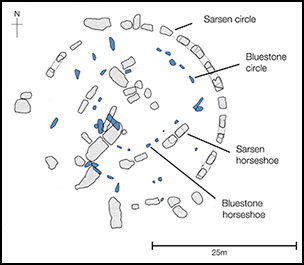Article contents
Retracing the footsteps of H.H. Thomas: a review of his Stonehenge bluestone provenancing study
Published online by Cambridge University Press: 31 May 2018
Abstract

The long-distance transport of the Stonehenge bluestones from the Mynydd Preseli area of north Pembrokeshire was first proposed by geologist H.H. Thomas in 1923. For over 80 years, his work on the provenancing of the Stonehenge bluestones from locations in Mynydd Preseli in south Wales has been accepted at face value. New analytical techniques, alongside transmitted and reflected light microscopy, have recently prompted renewed scrutiny of Thomas's work. While respectable for its time, the results of these new analyses, combined with a thorough checking of the archived samples consulted by Thomas, reveal that key locations long believed to be sources for the Stonehenge bluestones can be discounted in favour of newly identified locations at Craig-Rhos-y-felin and Carn Goedog.
Information
- Type
- Research
- Information
- Copyright
- Copyright © Antiquity Publications Ltd, 2018
References
- 5
- Cited by

